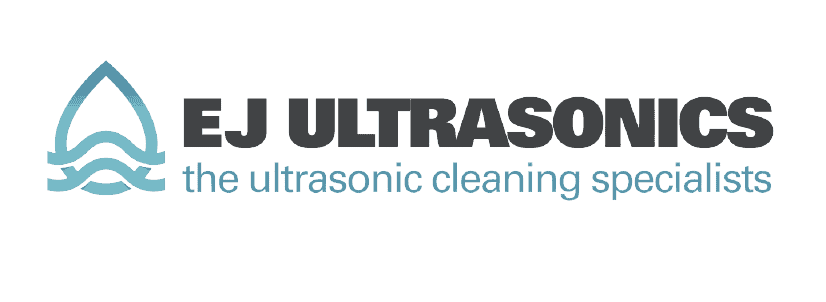Ultrasonic cleaners are one of the most effective ways of cleaning a variety of items, including tools, industrial parts, tiny medical instruments, eyeglasses, and plenty more.
Ultrasonic cleaning is a ground-breaking cleaning technology that works by using high-frequency sound waves to create cavitation bubbles in a liquid. These bubbles implode with immense force and release a large amount of energy. The imploding bubbles cause a scrubbing action that can effectively remove contaminants and other dirt from the surfaces of the items. This process is often used in combination with detergents to remove even the most stubborn dirt, grime, and contaminants from surfaces.
But does it also kill bacteria? Yes, it does!
Ultrasonic cleaners are very effective at killing bacteria. In fact, they are often used in hospitals and other medical facilities to clean delicate instruments and equipment. You can read more about why ultrasonic cleaners are essential to the medical industry here.
Ultrasonic cleaners kill bacteria and other pathogens through physical means rather than a chemical reaction, which negates the need for harsh compounds and thus the possibility of instigating resistant organisms. One of the reasons why ultrasonic cleaners are so effective at killing bacteria is because of the cavitation bubbles. When these bubbles implode, they create a powerful shockwave that disrupts the cell membranes of bacteria, causing them to rupture and die. This method of cleaning is incredibly effective and cannot be replicated with traditional cleaning methods.
Ultrasonic cleaners are incredibly powerful and can remove dirt and contaminants from even the most obscurely shaped items. The cavitation bubbles expand and eventually implode when they come into contact with an item. Once imploded, the energy dislodges contaminants even from intricate items.
What types of ultrasonic cleaners are there?
Industrial Ultrasonic Cleaners – These are typically much larger in size and used for cleaning large items such as tools, engine parts, and industrial equipment.
Benchtop Ultrasonic Cleaners – These are larger household ultrasonic cleaners that sit on top of a counter or table.
Multi-stage Ultrasonic Cleaners – These are the most powerful type of ultrasonic cleaners and have multiple tanks that clean items in different stages.
Portable – These are the smallest type of ultrasonic cleaners and can be easily carried around to clean smaller, more delicate items such as watch pieces.
How long does it take for an ultrasonic cleaner to kill bacteria?
The amount of time it takes for an ultrasonic cleaner to kill bacteria varies depending on the type of bacteria and the strength of the ultrasonic cleaner. However, most bacteria will be killed within a few minutes of being exposed to an ultrasonic cleaner.
Are ultrasonic cleaners safe?
Yes, ultrasonic cleaners are safe to use. The cleaning process does not rely on harsh chemicals or heat to kill bacteria, so there is no risk of damaging delicate items.
What is the difference between an ultrasonic cleaner and a regular cleaning solution?
An ultrasonic cleaner uses cavitation bubbles to create a scrubbing action that dislodges contaminants from surfaces. A regular cleaning solution relies on chemicals to break down and remove dirt and grime.
What can’t you put in an ultrasonic cleaner?
You should not put anything in an ultrasonic cleaner that is not compatible with water or that could be damaged by coming into contact with water. This includes items made of wood, latex and some types of plastics.
Glass items should also not be used in an ultrasonic cleaner as they are prone to breaking or getting damaged while in the cleaner. Find out more her about what can be cleaned in a ultrasonic cleaner HERE.
Do I need to rinse my items after using an ultrasonic cleaner?
For the best clean possible a rinse stage is always advised. This will remove any remaining contaminants and also any chemical residue left on the parts. An ultrasonic cleaner and a rinse should remove all of the dirt, grime, and contaminants from your items and leave them clean.
How do I use an ultrasonic cleaner?
Fill the tank of the ultrasonic cleaner with water and a small amount of detergent. Place the items to be cleaned in the tank and turn on the ultrasonic cleaner. The amount of time required to clean the items will vary depending on the type of cleaner and the size of the items being cleaned.
Once the cycle is complete, remove the items from the tank and dry them off with a soft cloth. If you are cleaning delicate items, you may want to rinse them off with water to remove any residue.
If you are looking for a safe, effective, and thorough way to clean items and kill bacteria, an ultrasonic cleaner could be perfect for you. If you’re undecided about how useful an ultrasonic cleaner could be for you, we have renting options available to help you try before you commit to purchasing.
Alternatively, if you have any other questions or would like to know more about us and what we do, please contact us directly.


